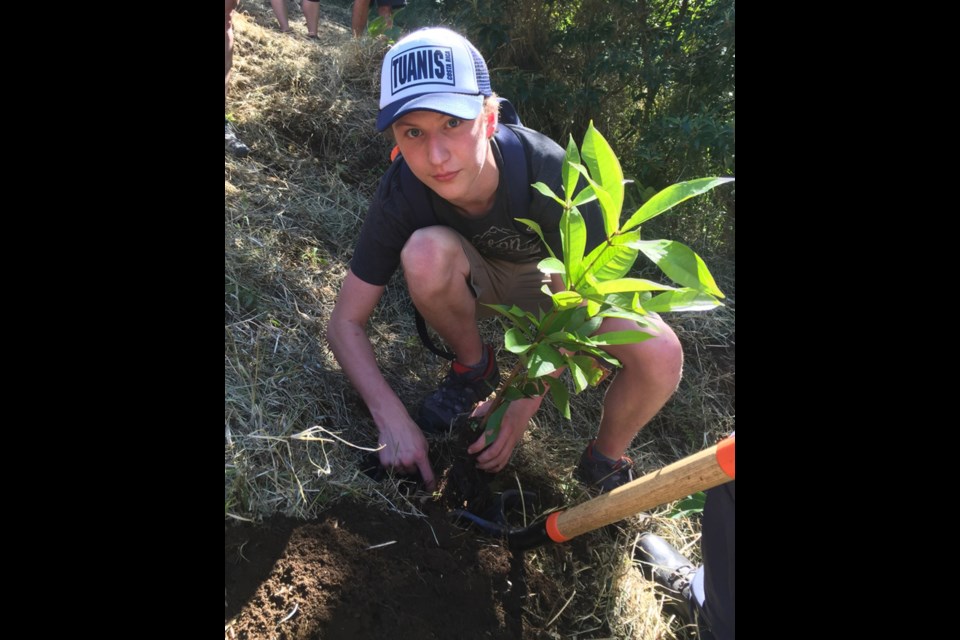The field trip. It has been a staple of the educational experience for generations. It is not a replacement, of course, for the more academic pursuits of numeracy and literacy skills-building, but a powerful add-on, an opportunity to expand young horizons beyond the classroom.
An overseas trip is the pinnacle of such opportunities, something Sacred Heart High School has been offering for years. This year’s teacher-coordinator of the trip, Brian Chisholm, explained Costa Rica fit the bill perfectly.
“I was flipping through the [EF Educational Tours] catalogue and saw the Costa Rica one, the itinerary for it, and I just thought this is exactly what I want to do, something where we’re going to be really active and adventurous, but learning a lot and taking in a new culture as well,” he said. “It just jumped right out at me when I saw it."
In February, 19 months of organizing, planning, fund-raising and anticipation later, the trip became reality for 48 students and staff.
Chisholm said it was not just the students who learned a lot.
“For me, there’s so much biological diversity down there, which goes right along with what [the students] are learning in school here,” he said. “We saw lots of different animals and plants and insects and snakes, you name it and we saw it, but also the micro-climates of the country. One day, we were just deep in the rainforest, then all of a sudden we’re in a dry forest, then a transitional forest, then we’re at the ocean. Just to see the biology and the culture and the climate that the country has to offer... it was incredible down there.”
Student Austin Jasan was attracted by that promise of something unlike anything he had experienced before.
“I liked the idea that it was going to completely different part of the world that has a completely different climate,” he said. “You go to Europe and it has kind of the same climate, but I thought it would be cool to see the rainforest. I looked into the country and all the biodiversity and stuff and I thought it would be really interesting to go and I was excited to see all the different things.”
Jasan said one of the things that made it all the more satisfying was that he paid for it himself through fundraising and working a part-time job.
That is something the school encourages as another part of the learning experience.
Madison Kowalchuk, another student traveller, was particularly fascinated by a lesson in vertical ecology when they took a gondala ride above the canapy of the forest.
“We went basically right above the treetops,” she explained. “We were so used to looking up, I mean the whole time I was looking up because there were so many tall trees and vines everywhere, but on the ride we got to see everything from the top down and our tour [guide] was explaining to us how all the trees kind of had different responsibilities, and how the animals and everything connected to each other and I thought that was a really cool experience.”
While they enjoyed the learning, both teenagers agreed, the best part of the trip was probably white water rafting.
In addition to education and fun, there was also a bit of work planting trees, something all EF Educational Tours groups do to help with reforestation on the EF reserve in Monteverde Cloud Forest.
And they did manage a little bit of time for straight up relaxing, including a morning on the beach and a game of football (soccer) with some local kids. They lost, badly, despite outnumbering the Costa Ricans three-to-one.
Chisholm said the idigenous people were also fascinating with their traditional food, dress and dancing, but despite the distance between Costa Rica and here, noted cultural similarities with our First Nations.
“The people that we saw living traditionally, I think there’s a lot of similarity between what it is here and what it is there,” he said. “They’re struggling as well to maintain the culture.”
Perhaps the biggest culture shock for the kids, however, was the food.
“Especially the beans and rice at breakfast time,” Jasan, noted.
“Yeah, that was different,” Kowalchuk added. “It’s kind of the same here, we almost have the same things every day, like we will have a bowl of cereal for breakfast and maybe chicken for supper, but beans and rice for breakfast, that was completely different for us.”



